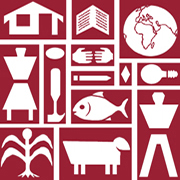Reported by Jenn Flemming
CIE welcomed Dr. Krishna Poudel from the Institute for Global Health at UMass to a Tuesday Dialogue to talk about his professional and academic journey, as well as his experience of working at the intersection of public health and education. He shared experiences illustrating how he utilized education programs to address public health problems, particularly in resource-limited settings.
Dr. Poudel, originally from Nepal, began his journey as a clinician, working for such organization as Save the Children, UNDP, and the WHO. While he noted considerable medical success in the treatment of patients at health clinics, he observed that often these patients would return 3-6 months later with the same conditions. “That is when I realized that what we were doing was not sufficient,” he said.
Dr. Poudel then began exploring the use of education, both formal and non-formal to expand access and effectiveness. He started by using training as a primary mechanism targeting health workers in family planning, primary care, maternal care, and female community health volunteers as the first stage. While training produced moderate success in expanding access at the local level, the numbers reached were relatively small. He then explored the use of traditional health workers who were deeply respected and trusted by community members, but found that their practices were often in conflict with modern health practices. They then began working with traditional healers, using local metaphors and experience to gradually help them understand how some traditional methods were harmful. Once convinced the traditional healers became very effective in spreading health practices in the community.
 To further expand access, Dr. Poudel began exploring the use of schools for health promotion efforts. In most rural locations, schools substantially outnumbered clinics and were regarded as the most important institution in the community. He began by targeting teachers for training, but found that teachers were often unable to find time to use their new knowledge. So, he then switched to working with students, training them to become peer health workers, helping them organize health clubs and activities. Eventually, the child-to-child and child-to-parents methods became effective ways to spread public health information and to shape health-related behaviors. “When the children were involved,” he noted, “the outcomes were always much better.”
To further expand access, Dr. Poudel began exploring the use of schools for health promotion efforts. In most rural locations, schools substantially outnumbered clinics and were regarded as the most important institution in the community. He began by targeting teachers for training, but found that teachers were often unable to find time to use their new knowledge. So, he then switched to working with students, training them to become peer health workers, helping them organize health clubs and activities. Eventually, the child-to-child and child-to-parents methods became effective ways to spread public health information and to shape health-related behaviors. “When the children were involved,” he noted, “the outcomes were always much better.”
